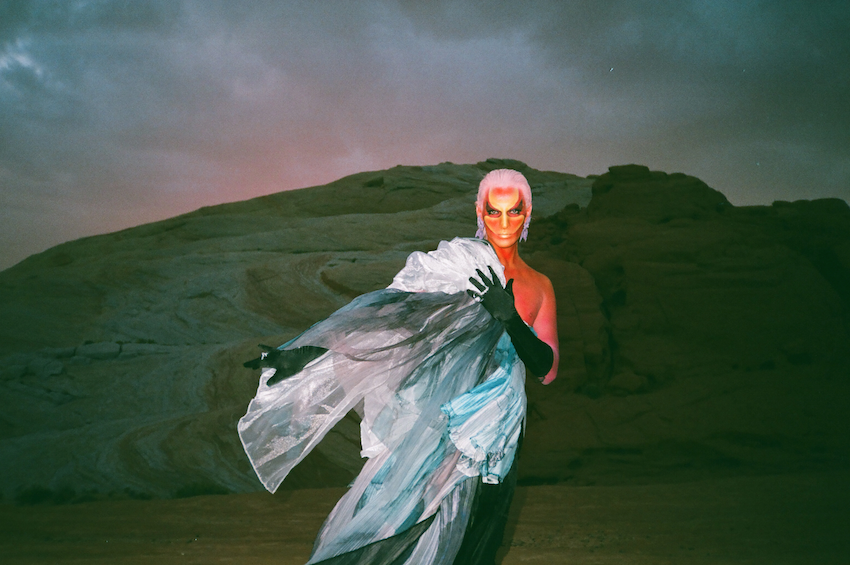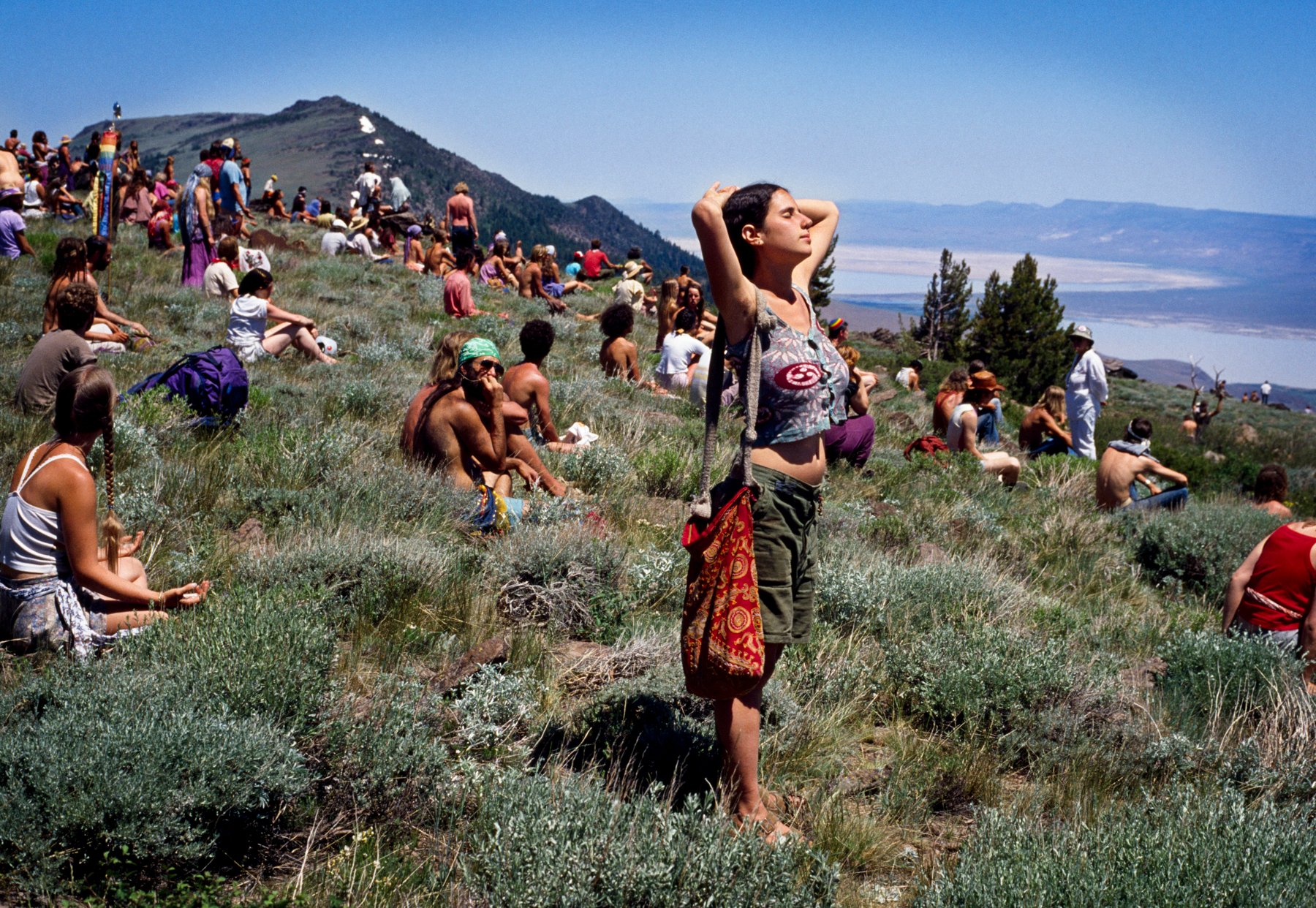Curated Conversation:
Momus Collective
 #Bufficorn ... to the Moon by Martin Lukas Ostachowski
#Bufficorn ... to the Moon by Martin Lukas Ostachowski
An: What is the Momus Collective, and what is the story behind its founding?
Momus Collective: The founding of the Momus Collective can be traced back to the early days of the Metaverse on Ethereum. Alex - a colleague and friend - had purchased a large quantity of Decentraland parcels and was looking for help to experiment with ideas. We decided to pool our energies and resources together and started brainstorming on different kinds of experiences that could only be built at the intersection of virtual worlds and the censorship-resistant programmable world computer.
Back then the canvas was clean. We were discussing p2p interactive games, shared curation museums, decentralized learning experiences, etc. There was close to no infrastructure - no usable DAOs, no user-friendly multisig. So we decided that we would start collecting together in what we informally called the Momus Collection.
It was initially just us two, but in late 2018, we met Daniel who was leading a studio called Polygonal Mind and who became instrumental in realizing some of the crazy ideas we had envisioned. Along with his team of brilliant developers and designers - most notably Laura, Picazo, Kourtin, Victor - we built some of the first large scenes in Decentraland and later expanded to other worlds such as Voxels. It became clear that interoperability was going to be a defining factor over the web2 experience.
Virtual Photography #1 by ROBNESS
The Metaverse wasn't going to be a single "virtual world" dominating the market, it was going to be the mix of all these worlds existing together and users being able to move and display their assets across all of them. The "metaverse" state was really just a subset of the Ethereum state and was going to be experienced by people running local clients such as Ethereum/IPFS nodes and p2p virtual world servers/clients.
This led to the realization that for interoperability to succeed, standardization - such as ERC721 - was going to be critical. This is when we went all in and purchased a large part of the collection. We started using those NFTs in our virtual world scenes to make them more visually appealing. Some of the early NFTs were 3D models we would put in the scenes. Others were cryptoart pieces that we would display on the walls as texture - before those worlds even supported displaying NFTs. It was essentially cheaper and easier to create cool scenes this way.
 RSF-1-023-026 Four frames Muybridge Horse by Mattia Cuttini
RSF-1-023-026 Four frames Muybridge Horse by Mattia Cuttini
A: What made you believe in crypto art in 2018-2019?
MC: The main factor for our excitement toward cryptoart was that it was the first time that a cohort of non-tech people were involved with the space.
I remember making some of our first SuperRare sweeps in January 2019 and reading the reaction of artists being so excited to see their hard work rewarded and their vision validated.
This has to be put in the context that we were coming off the ICO bubble - where a bunch of tech people were sending millions/billions to other tech people who sometimes were promising nothing but a dubious whitepaper.
With cryptoart, we were sending money directly to people who were creating art because they loved it. In exchange, they were sending us magic internet jpegs. It felt so much more real and valuable than sending 4 billion dollars to EOS - for example. Worst-case scenario, if we were wrong, we would have enabled humans to create for the love of creating.
Adjacent to this, it was the belief that the "metaverse" - a persistent parallel digital existence - was inevitable (we still strongly believe this to be true). If that digital space was going to exist for the next few centuries, then surely some of those early digital artifacts would become desirable.
A: This is the first time the Momus Collective has sold an early XCOPY 1/1 work, ‘Chatbot and Chill?’, which you’ve held since 2019. What prompted the sale now, after holding it for six years?
MC: It is still so, so early for the Metaverse. We haven't made it past the first inning really - the transition from physical to digital existence will play out over decades. Both Alex and I have a very long-term vision of how the space will evolve, and the best strategy is often to simply sit on your hands. Also, we don't play the speculation games that are prevalent in crypto. It's just not our style.
The reason we did sell a few items since 2021 - including 'Chatbot and Chill?' - is to fund what has now become the main purpose of the collective: to play our small part in realizing the grander vision for crypto at large. The endgame for crypto was never to simply augment the existing system with better USD, better Nasdaq, or better casinos. It was to solve large societal problems that require new ways of coordinating.
We sold 'Chatbot and Chill?' to bootstrap the Momus ReFi Fund. More on this later (:
A: You still own 11 of the earliest XCOPY 1/1 pieces. What are your plans for them?
MC: Mainly, we will keep displaying them in the Metaverse (: the only one we might part with at some point is Greedy Guts (token #9, SuperRare). That would be to add to the Momus Refi Fund - and then that would be it for a few decades, I suspect.
In the very, very long term, we'd like to transfer the ownership of the entire collection to a contract that would automatically trigger auctions of items of the collection every ~10 years over the course of ~200 years. The proceeds would be programmatically forwarded to the Momus ReFi Fund, which would be fully autonomous at that point.
 Echoes of a Dead Earth by XCOPY
Echoes of a Dead Earth by XCOPY
A: What convinced you of XCOPY’s potential back in 2018-2019, long before he was widely recognized as one of the most important artists in this space and when his works were priced in the low thousands?
MC: Low thousands? It was low hundreds (: We did buy XCOPY's SuperRare genesis piece (Echoes of a dead earth, #5) for 6.5 ETH in December 2019 and that was an abnormally large purchase price back then, around 1000 USD. And then, we bought Lockup (token #1022) at the beginning of the COVID lockup for 25 ETH, which was about 5000 USD, but it was a fundraising auction for the benefit of SR artists. It must have been one of the largest NFT purchases back then.
Otherwise, we bought most of our XCOPY artworks in 2019 for around 1 ETH each.
To answer the question, we bought a lot of it simply because we liked it. I can't say for sure, but I suspect XCOPY and I grew up playing the same video games and were generally influenced by the same early computer/internet culture. There's something about the glitch aesthetic that simply resonates strongly - and brings nostalgia. What's the point of art if not to make you feel something?
And to be clear, we would give the same answer for all the early art we bought. I know X is getting a lot of attention, but there are so many early visionary cryptoartists who are left to be properly appreciated. From pixel art-inspired pieces to artists using early AI/computer tools to make amazing art - and everything in between. There were hundreds of creators pouring their souls into their art while no one believed in them.
They will eventually get the spotlight; people haven't looked deeply enough just yet.
Block 1920000 - The DAO fork by hex6c
A: What is the mission of the Momus Collective, and what are your plans for the works in the collection moving forward?
MC: Around 2014-2016, it felt like most crypto participants dreamed of using blockchains to reinvent institutions, replace the financial system, and reform society at large. Sometime around the ICO bubble of 2017, many stopped dreaming, and the new norm became to optimize for quick exits. We think crypto is critical in building a world free of human corruption. A world where humans can coordinate privately and efficiently to solve large-scale problems.
The mission of the Momus Collective is to play a small part in realizing this vision. More concretely, we have been funding the Regenerative Finance (ReFi) movement for 3 years now. In 2020, we witnessed a new cohort of participants joining the crypto space: the Regens. People who weren't that deep into the crypto ecosystem but who were deep into building decentralized solutions to some of society's largest-scale problems such as climate change.
In 2021 we saw the launch of the Toucan Protocol and several other projects kick off the ReFi movement. Since then a growing number of dreamers have joined the movement, building new ways to bring carbon credits onchain, fund climate action, and track impact.
Similar to the artists we supported in the past, we saw this new cohort of real-world builders who needed support. We financed some of the Regens with over $1.5M in funding so they could bootstrap tooling, run experiments, and grow ecosystems to push their vision further. We sold several of our jpegs in order to fund this work, which is not sustainable in itself, as our collection is finite.
With the sale of 'Chatbot and Chill?', we now have nearly 700 ETH deposited across DeFi earning yield which we will dedicate entirely to the ReFi movement. For 2025 and the foreseeable future, we have partnered with the Climate Coordination Network to distribute that yield toward the most impactful projects in the space. If you are interested in joining us in funding this important work, reach out to the Climate Coordination Network.
You can read our statement about the Momus ReFi Fund here.
Coldie Method™ by Eclectic Method
A: What is your view on the current state of the crypto art space, and what is your vision for its future?
MC: The current state is that a few of us have discovered how to make fire and the rest of the world doesn't believe us even if we start one right in front of them. The vision for the future of cryptoart is simple: everything that is created digitally will come with a digital certificate of authenticity. I would have guessed that the rise of AI would have made this even more obvious, but somehow it's still not obvious to everyone.
To be more concrete and because I suspect you want something spicier, here are two strong, unrelated opinions:
1) I believe most of the bad actors who soured the 2020-2022 cryptoart cycle have now migrated to trading memecoins because they never really cared for art and creators to start with.
2) I believe every cryptoart transaction happening "offchain" via private brokers shows a lack of belief in this new system. You don't want to pay royalties? That's up to you, and who am I to judge, but at least use the blockchain. Going through a 3rd party broker to trade art is lame and it will forever be visible for everyone to see. We literally invented smart contracts for this; there are plenty of contracts out there to make atomic swaps that preserve provenance. Use them.
SuperRare Primary Network by BarabasiLab
Witness a revolution, an art market emerging in front of our eyes. “SuperRare Primary Network” captures the evolution of the primary market behind SuperRare, as described in The New York Times Essay "The Art World Usually Works in Secret. Here’s a Look Inside,” published on 5/7/21.
The nodes of the map are artworks sold on SuperRare between April 2018 and April 2021, shown in the order in which the NFTs were minted. Each artwork is linked to all art owned by the same collector.
Colors highlight the works purchased by the top 20 collectors on the primary market - see tags for the list of highlighted collectors.
Go to art.barabasilab.com/nft/ to identify the individual artworks, artists, and collectors on the map.
©BarabásiLab (Milán Janosov and Albert-László Barabási).
A: Are there any artists or artworks in your collection that you’d particularly like to highlight?
MC: There are many artworks that we have a strong connection with and would never part with. We submitted some of them for you to include along this conversation.
At a high level, we have a lot of respect for artists experimenting at the frontier of smart contracts, technology (digital and physical) and community building. Really, anyone who has stuck around during the winter(s) or anyone who is joining for the 'right' reason. The love of creating. Not the financial gains.
AI Imagined Portrait Painted by a Robot by Pindar Van Arman
A: What advice would you give to collectors in this space?
MC: You are living in the early days of a massive transformation. A unique opportunity to have a positive impact on the world and its beauty. Buy art that makes you feel something inside. Buy art that can change the trajectory of an artist's life for the better.
Don't fall for financial nihilism - the world is beautiful, and there's much more to life than trading tokens to buy shiny things you won't be able to bring to the other side anyways.
If you hit the jackpot, use that to make the world a better place. You have only one life, one legacy. The butterfly effect is real and the smallest positive contribution you make to this space will reverberate through space and time forever.






